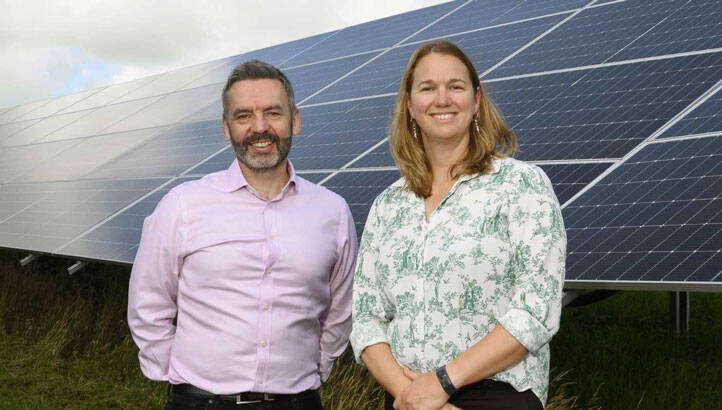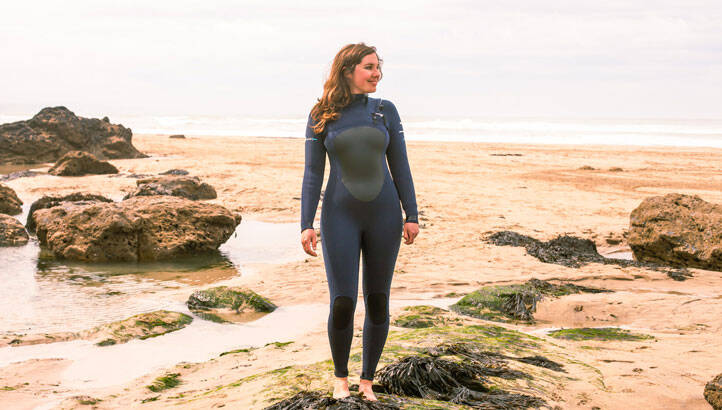Register for free and continue reading
Join our growing army of changemakers and get unlimited access to our premium content

Published every week, this series charts how businesses and sustainability professionals are working to achieve their ‘Mission Possible’ across the campaign’s five key pillars – energy, resources, infrastructure, mobility and business leadership.
Across the UK and across the world, leading businesses, cities, states and regions are turning environmental ambitions into action. Here, we round up five positive sustainability stories from this week.
ENERGY: Royal Mint unveils renewable energy hub in Wales
One of our most popular news articles this week is about the approval of planning permission for the world’s biggest battery energy storage project. The Manchester-based project from Carlton Power is due online in 2025.
In another energy innovation success story for the UK, the Royal Mint has officially opened a new Local Energy Centre at its coin manufacturing site in Llantrisant, Wales. The centre will generate enough renewable energy to meet around 70% of the site’s energy needs.
The centre’s key components are a 2MW solar farm, two onshore wind turbines and a battery energy storage system. The site has also been fitted with a new combined heat and power (CHP) unit capable of running on pure hydrogen.
Infinite Renewables has supported the Royal Mint with the installation of these technologies. Its director Andrew Crossman said: “This is a trail-blazing project that shines a light on the future of local, multi-technology generation, whilst providing energy security for the future.”
RESOURCES: Finisterre launches wetsuit rental service
When we think of fast fashion, wetsuits may not be the first thing that spring to mind. They are not exactly throwaway items, but most are made from neoprene – an extremely durable material that is hard to recycle and even harder to biodegrade.
Outdoor brand Finisterre has, therefore, opted out of using neoprene for its wetsuit range. It instead uses a natural rubber called Yulex, which is easier to manage as waste.
It has also launched a new rental service this week to help prolong the life of wetsuits and maximise their use. Shoppers can use this service online, selecting their design and size online before receiving availability.
As well as being a lower-impact option environmentally, rental can make items more accessible. Finisterre’s most popular full-body men’s wetsuits cost £250 to buy but rental rates begin at £30.
MOBILITY: Zoom EV unveils peer-to-peer sharing platform
The RAC estimates that the average car in England will spend 96% of its life parked. The proportion is globally sits around 94%.
So, as the electric vehicle (EV) transition continues, we probably do not need to all replace our cars like-for-like. Sharing or renting is becoming an increasingly attractive proposition, especially for those in urban areas who may only need a car on occasion.
Zoom EV recently launched a new peer-to-peer sharing service for UK-based EV owners, enabling them to earn extra cash from a car or van that would otherwise have sat parked. The renters will be covered for insurance under the service and will be able to see pictures and prices for their vehicle ahead of time.
Zoom EV describes the offering as “like AirBnb for EVs” and has called it “a win, win, win for the owner, the user and for the planet”.
THE BUILT ENVIRONMENT: Germany’s first ‘net-zero neighborhood’ under construction in Berlin
The value chains of urban areas account for 70% of global annual emissions, according to the UN. As urbanization continues, it will be crucial to decarbonise cities if the net-zero transition is to be delivered.
PwC has this week posted an update on the development of Berlin TXL. It is a major regeneration project arounds Berlin’s Tegel aerodrome that has been in the works for more than ten years, with construction now underway on key facets of what is set to be Germany’s first neighborhood with net-zero operational emissions.
TXL is designed as a walkable neighbourhood, where all residents and workers will be within a five-minute walk of all key services. Novel construction methods and materials will be used to minimize embodied carbon, and buildings and infrastructure systems face heightened requirements on energy efficiency and renewable energy use.
Several cleantech start-ups are already setting up shop in TXL, whether in offices or at its industrial and research park. Businesses working in nature-based solutions are also flocking to the neighborhood.
PwC describes TXL as “an $8bn sandbox for figuring out sustainable urban development at scale”.
BUSINESS LEADERSHIP: Formula E celebrates partnership with UNICEF’s global climate fund
Fans of motorsport will have a busy Sunday (30 July), when the F1 Grand Prix in Belgium and the London E-Prix from Formula E will get underway.
As part of preparations for the event, Formula E has posted progress on its charity partnership with UNICEF’s global climate fund. It has supported the fund for two years and had aimed to support three million young people on the frontlines of the climate crisis within three years.
So far, 2.5 million children and young people have been supported, Formula E has announced. The fund supports climate resilience for education systems, healthcare and water systems in the most-affected regions, enabling youth to access these key services. It also supports the energy transition, including clean cooking fuels. Projects supported by Formula E have reached places including Mexico and the Caribbean.
Formula E’s director of sustainability Julia Palle said: “With one billion children already at extreme risk from the impacts of climate change, we need to ensure they have the best support possible as well as the right education as they grow up. They will be the ones inheriting the world and influencing change so we’re pleased to be involved in their education and investing in their communities.”







Please login or Register to leave a comment.